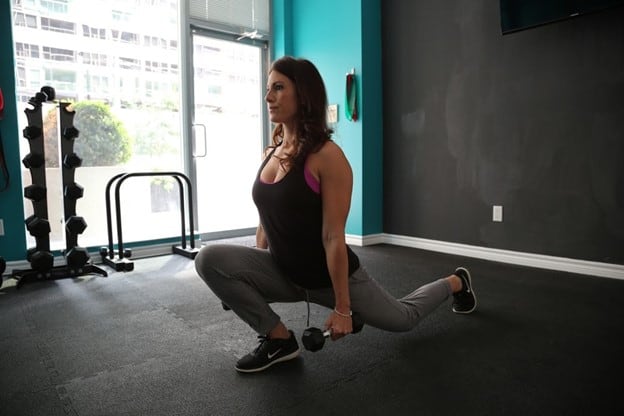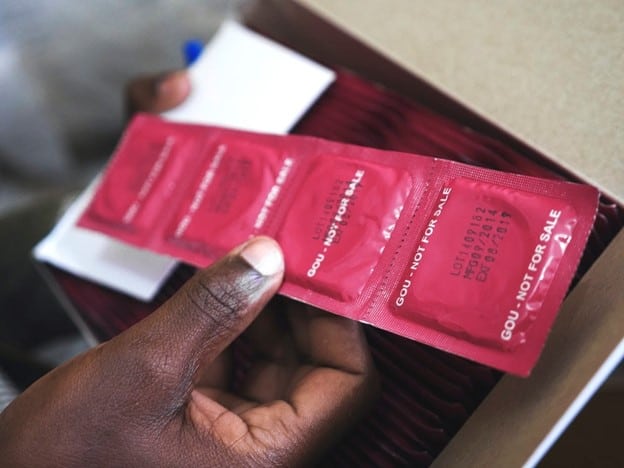Medically reviewed by Sophia Yen, MD, MPH – Written by Pandia Health Editorial Team
Your reproductive health can influence a lot of things, like fertility, pregnancy, and mental health. Exercising and reproductive health are directly related. By increasing exercise, you can help your overall health! Read on to learn why exercise helps reproductive health, what specific benefits you can experience, and the types of exercise that are successful!

How exercise affects fertility
What’s the connection between exercise and fertility? Intense exercise is not necessary to experience its benefits. Preliminary studies show that light to moderate exercise may improve reproductive function. The main functions of the reproductive system are producing egg and sperm cells, and moving and nurturing cells and offspring. If you are looking to increase fertility directly, more intense and vigorous exercise can help ovulation… On the contrary, exercise that is unmonitored can lead to over-exercise which has a negative impact on fertility, it is always important to maintain an exercise routine and healthy body weight when exercising. Consistent and regular exercise is key to maintaining the health of your reproductive systems.
Ovulation
Medical studies indicate that exercise and fertility are directly related. Consistent healthy exercise can increase the amount of ovulation which leads to more regular menstrual cycles and can help fertility. The effect of exercise on ovulation and anovulation is different depending on the exercise intensity and exercise routines.
Anovulation is the absence of ovulation, it can cause infertility and is a product of an imbalance of hormones that result in ovulation. Anovulation can be a part of polycystic ovary syndrome, this syndrome presents itself in enlarged ovaries with small cysts on the outer edges. The solutions to this are birth control pills which work to regularize periods and hormones to increase fertility. You can order birth controls today from Pandia Health after consulting with your doctor about what’s best for you and your body!
There is an increased risk of anovulation in people who exercise vigorously for periods greater than an hour every day. However, exercise of more moderate intensity, that is only for 30-60 min per day is shown to be associated with a reduced risk of anovulatory infertility.
Exercise in moderation is important in maintaining healthy regular menstrual cycles and increasing fertility.
Exercise helps with Weight and Reproductive Health
When you exercise regularly your body can lose weight, but the effectiveness of exercise for weight loss is overestimated. People need to understand the long-term health benefits of exercise that can maintain reproductive health. Exercise has multiple additional benefits, it can also help decrease the probability of heart disease, diabetes, stroke, high blood pressure, osteoporosis, and certain cancers, and reduce stress and boost your mood.
In order to lose weight, you have to not only exercise but also practice other patterns of healthy living. Dietary changes are a method of burning calories, similar to how exercise burns calories. Additionally, strength training and weight training that targets specific areas build lean body mass, which helps weight loss.
Medical studies indicate that weight loss and exercise cause an increase in fertility for women trying to conceive. By keeping a healthy body weight and exercising regularly you can maintain your reproductive health. For overweight women trying to conceive, weight loss and healthy exercise are important in getting pregnant and having a healthy pregnancy.
Exercises for Weight loss
Walking is an easy and low-impact moderate exercise that is associated directly with weight loss. Scientists from Harvard Health describe how a 155-pound (70-kg) person can burn approximately 167 calories every 30 minutes of walking at a moderate pace of 4 mph (6.4 km/h). You can also vary the level of walking that you do, more challenging uphill hikes will increase the number of calories you burn. Keeping track of walking is easy through iPhone apps and watching that record daily movement.
Jogging and running are steps up from walking for people seeking more physical activity. The difference between jogging and running is that the rate of jogging is about 4–6 mph (6.4–9.7 km/h), while a running pace is more intense at 6 (or more) mph (9.7 km/h). The Harvard studies indicate that visceral fat is burned through jogging and running. A 155-pound (70-kg) person can burn about 298 calories every 30 minutes of jogging at a speed of 5-mph (8-km/h), or 372 calories per 30 minutes of running at a pace of 6-mph (9.7-km/h). Running and jogging are both effective ways of more strenuous exercise that utilizes all the major muscles.
Cycling outdoors, in gyms, and on stationary bikes is another way to lose weight and maintain a healthy weight and healthy BMI. The Harvard study indicates that a 155-pound (70-kg) person can burn about 260 calories per 30 minutes of cycling on a stationary bike at a steady moderate pace, or 298 calories per 30 minutes on an outside bicycle at a moderate pace of 12–13.9 mph (19–22.4 km/h). Cycling outside and inside is a simple way to lose weight to benefit and maintain reproductive health.
Weight training and interval training are two additional ways for people to lose weight. Weight training builds the strength of major muscles and many women find it to be a moderate to vigorous exercise. According to Harvard Health, it’s approximated that a 155-pound (70-kg) person burns about 112 calories for every 30 minutes of weight training. There is described to be an increase in the metabolic rate of both women and men, meaning calories are burned easier. Interval training, which is also described as high-intensity training, is exercises that are highly intense and then followed by recovery periods. This helps maintain a healthy weight which supports reproductive health.
Incorporating these specific exercises into your exercise routine is important in maintaining a healthy normal weight and having a healthy reproductive system. This is particularly important for women with an irregular menstrual cycle and women who want to improve fertility.
How weight affects fertility
While maintaining a healthy weight through exercise and moderate activity helps increase reproductive health and fertility, intense exercise is associated with decreased fertility. That is why it is important to consistently monitor exercise, to ensure you maintain a healthy weight, healthy BMI, and healthy muscle mass. Medical studies indicate that vigorous exercise for over an hour a day can decrease hormonal production. This decreases fertility because these hormones are responsible for ovary function. Overworking your body through exercise causes your ovaries to become underactive, they can then stop producing eggs and estrogen. While intense exercise may seem like a fast way to lose weight, it actually makes you have an increased risk of decreasing reproduction and overall health. Monitor your exercise consistently so you can maintain a healthy reproductive system.
How exercise affects mental health
Doctors describe how some forms of depression and anxiety can be aided by exercise. A study by Harvard T.H. Chan School of Public Health discovered through research that running for 15 minutes a day or walking for about an hour reduces the risk of major depression by 26%. Furthermore, it can also reduce anxiety, tension, and stress. By releasing hormonal endorphins it promotes overall well-being and boosts physical and mental energy, decreasing stress. Often during your menstrual cycle, you can experience unusual stress, anxiety, and depression. By releasing endorphins, exercise can help your mental health! This lowered physiological stress and anxiety aids hormonal symptoms, helping you maintain your reproductive health.
Exercise and Pregnancy
Moderate-intensity aerobic activity is important for healthy pregnant women to thrive throughout their pregnancy. For their body and mind, it is overall very beneficial. It helps you have healthy weight gain and prevents reproductive diseases and cardiovascular disease. Additionally, it can decrease some common discomforts from pregnancy, these discomforts include constipation, back pain, and swelling in your legs, ankles, and feet. Gestational diabetes and preeclampsia are common pregnancy diseases that impact a safe pregnancy and birth, consistent monitored exercise is super important. Vigorous aerobic exercise can be harmful but a monitored moderate exercise routine is recommended for healthy women.
Staying strong for labor
By keeping a healthy weight and strong body, you can work to ensure good labor. Some doctors’ studies indicate women who exercise regularly have lower rates of a c-section birth, less pain and discomfort during labor, and faster postpartum recovery. There are additional workouts targeted for women about to go into labor that is labor inducive. Some yoga-based exercise routines are designed to help your hip mobility, strengthen the muscles in your thighs, and make birthing and pushing positions comfortable. Regular aerobic exercise is important to strengthen your hips and thighs for labor. While consistent exercise before birth can benefit your long-term mental and physical health, some exercises close to labor can prepare your body for childbirth by targetting specific areas for strengthening.
Health benefits for the baby
A New York Times psychology report detailed the lasting benefits for children of mothers who exercised more regularly. First, babies of mothers who exercise regularly become physically coordinated a little earlier. Second, mothers who had a regular exercise routine had more healthy babies, who had better-conditioned cardiac muscles. More studies determined how kids of women who exercised developed stronger motor skills. While there are many theories as to how women who are healthy and regular exercise have babies who are developmentally more advanced and stronger. The results of the study conclude that pregnant women who consistently exercise, create healthier babies who have more interest in the movement.
Maternal mortality
Maternal mortality is a common cause of death for pregnant women that disproportionately affects women of color. Maternal mortality can be caused by severe bleeding (sometimes called hemorrhage), infections, blood pressure disorders of pregnancy, like preeclampsia and eclampsia, complications of labor and delivery, or unsafe abortion. It is estimated that regular exercise causes a decrease in the amount of neonatal mortality and maternal mortality by 137 deaths and 20 deaths. Keeping a healthy weight can help women prevent developing diseases associated with mortality, it is important to exercise regularly with approval from your doctor in order to have a healthy birth.
Another way to have a healthy reproductive system
There are many ways to maintain a healthy reproductive system.
First, quitting smoking is important in keeping a healthy reproductive system, increasing your fertility, and continuing a healthy pregnancy.
Second, going to your doctor for annual continued screening for fetal anomalies and other illnesses is important in protecting your body.
Third, practicing safe sax helps you avoid sexually transmitted diseases. Wearing a condom is always important to prevent life-altering diseases.
Fourth, having regular orgasms helps the release of healthy hormones and prompts the contraction of the uterus. This leads to a healthier body and overall reproductive system.
Fifth, maintaining a healthy diet with calcium and magnesium prevents negative symptoms of your period. It can help against headaches, sugar cravings, dizziness, and low blood sugar. This is important both for your physical and mental well-being.
Conclusion
Maintaining your reproductive health through regular exercise and healthy habbits is important for general health and well-being, fertility, and pregnancy. Exercise benefits the mental health as well as the physical health of a woman. It is additionally helpful for both a mother and her child when a pregnant woman exercises. Exercise is instrumental in ensuring healthy reproductive systems!
Disclaimer: The following information is for general informational purposes only and is NOT a substitute for professional medical advice. Always seek the advice of your doctor/primary care provider before starting or changing treatment.





